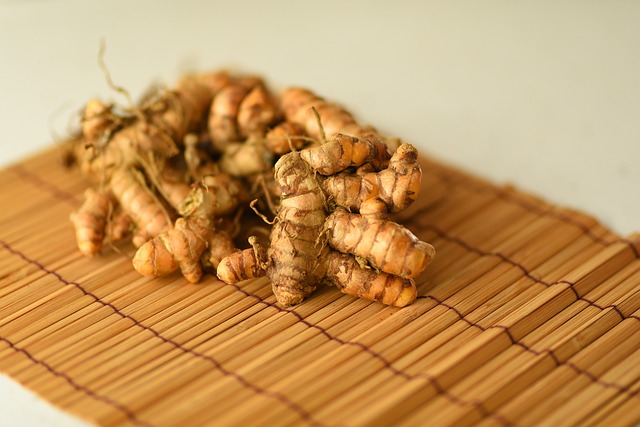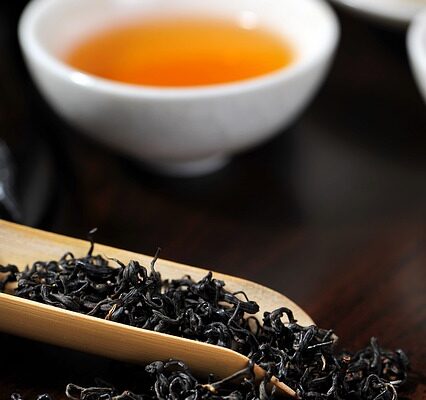An anti-inflammatory diet emphasizes nutrient-dense whole foods to alleviate chronic inflammation so you can lead a healthy life.
This diet stimulates the consumption of vitamins, minerals, fiber, essential fatty acids, and phytonutrients.
It’s loosely based on the Mediterranean diet but with certain intentional additions like green and black teas, which have been demonstrated to have anti-inflammatory properties.
Diet Plan for 7 Days
With so many cookbooks and online recipes on anti-inflammatory diet meal ideas, you can easily tailor this diet to your specific requirements. If you’re seeking specifics, the 7-day meal plan below gives you an idea of what a week on an anti-inflammatory diet might look like.
Please keep in mind that this meal plan is not exhaustive, and if you choose to live this way, there may be other meals that are better suitable for your likes, preferences, and budget.
Day 1: gluten-free wild blueberry orange scone, 1 cup black tea, 1 mango banana morning smoothie, 2 cups Russian-style red beet borscht, 5 ounces baked salmon with almond flaxseed crumbs, 1 serving roasted or grilled asparagus, 1 cup cooked brown rice,
Day 2: 1 served blueberry crunch bowl with no sugar added; 1 serving curried tuna salad avocado boats; 1/4 cup roasted red pepper lentil hummus with 3 ounces carrot sticks; 2 cups peanutty African chickpea stew
Day 3: 1 cup green tea, 1 cup California summer veggie omelet, 1 serving healthy fruit salad with citrus mint dressing, 1 serving tuna fish salad with fennel and orange salsa 2 tostadas black bean-arugula with turmeric guacamole

Day 4: 1 cup low-sugar coconut raspberry oatmeal, 8 ounces orange juice, 2 sesame tofu wraps with peanut dipping sauce 1 serve vermicelli with pork; 1/2 cup garlicky olive, walnut, and edamame mix
Day 5: 1 cup sliced strawberries; 1 cup Mediterranean quinoa-stuffed red peppers; 1 cup Mediterranean grilled eggplant salad three ounces 1 glass of red wine, spring mix greens with extra virgin olive oil
Day 6: 1 cup brown rice, 1 cup oat groats with berries and banana; crunchy slaw with teriyaki tofu (replace chicken with tofu); 1 cup green tea, 1 cup nut and fruit dark chocolate bark; za’atar spiced halibut with tomatoes and barley, 3 ounces spring mix greens with extra virgin olive oil, 1 glass red wine
Day 7: 1 cooked quinoa serving with almond milk, cinnamon, and fruit 1 cup black tea; 1 mango smoothie; spinach turkey meatballs with veggie orzo; vegetable muhammara dip Moroccan chicken with turmeric cauliflower couscous (wheat-free), olive-oil-sautéed green beans, 1 cup green tea
What You Can Consume
The anti-inflammatory diet comes in many forms, but the concept is always the same: Increase your consumption of veggies, fruits, nuts, seeds, healthy oils, and fish. You should also avoid inflammatory foods such as vegetable oils, trans fats, high-fructose corn syrup, processed foods, and added sugar. White and wheat flour should be limited or avoided, whereas caffeine, red wine, and dark chocolate should be consumed in moderation.
Vegetables and fruits
Fruits and vegetables include vitamins and phytonutrients.
- 3 to 4 servings of fruit per day
- 4-5 servings of vegetables each day
Legumes with whole grains
Whole or broken grains are high in fiber and nutrient content. Beans and legumes supplement your diet with protein, fiber, and vitamins.
- 3 servings of grains or more per day (bulgur, oats, rice, wheat, quinoa)
- 1 serving or more of beans or legumes per day (lentils, black beans, kidney beans, chickpeas)
Fats that are good for you
“Good” fat sources are abundant in omega-3s, as well as other vitamins and phytonutrients that may help reduce inflammation.
- You can consume 5-7 servings of healthy fats (avocado, olive oil, nuts, seeds) daily.
Protein that is lean
Once or twice a week, including animal protein and dairy products.
- 90% lean animal protein or more (pork tenderloin, chicken breast)
- Seafood and fish
- Foods made entirely of soy (tofu, soy milk)
- Eggs from pasture-raised chickens
Herbs, spices, and tea
Increase the amount of spices that have been demonstrated to lower inflammation. Caffeine Drinking tea over coffee and avoiding sugary energy drinks is OK in moderation.


- Garlic
- Turmeric
- Ginger
- Cinnamon
- Teas, both green and black
Red wine and dark chocolate
Red wine is abundant in polyphenols, particularly the antioxidant resveratrol. Chocolate 70% cacao or higher is high in antioxidants. On this diet, each of these products is permissible in moderation.
- Red wine
- 70% or more dark chocolate
Things You Shouldn’t Eat
The anti-inflammatory diet avoids foods that are thought to induce inflammation.
Vegetable and Margarine Oils
Foods high in omega-6 fatty acids, trans fat, and partially hydrogenated oils are prohibited.
- Margarine
- Shortening
- Foods that contain partly hydrogenated oils
- Safflower, sunflower, and corn oils should be used in limited amounts.
Wheat Flour with White Flour
Wheat flour has more grain than white flour, yet the glycemic index is similar. Wheat is avoided on the anti-inflammatory diet, whereas other whole grains are encouraged.
- Bread made from wheat
- Wheat crackers,
- Wheat pasta,
- Wheat cereal
- Wheat-containing baked foods
Refined sugar and processed foods
Processed foods with high levels of salt, sugar, and refined flour are avoided.
- Meat in its processed state (deli meat, hot dogs, bologna)
- Sucrose that has been refined
- Candies, cookies, and cakes
- Snacks that have been processed (chips, boxed meals)
Suggestions for Preparing an Anti-Inflammatory Diet
The anti-inflammatory diet is based on a straightforward claim: Persistent inflammation causes chronic disease, and lowering inflammation in the body can help to prevent disease and improve general health. While this plan is not intended for weight loss, it is certainly feasible to lose weight on it.
The anti-inflammatory diet does not provide a precise meal schedule. Instead, it simply suggests eating four to six times a day and incorporating carbohydrates, protein, and fat into each meal or snack. Instead of merely having a banana for breakfast, combine it with a couple of eggs or yogurt. Try porridge with almond butter or similar nut butter instead of toast with butter (to add protein).
Focusing on whole, natural foods and avoiding processed meals heavy in added sugar, sodium, and saturated fat is the simplest method to properly follow the anti-inflammatory diet. With this mindset, you’ll naturally gravitate to anti-inflammatory foods over inflammatory foods. Dr. Weil advises the following macronutrient ratio if you want to track your macronutrients:
- Carbohydrates account for 40% to 50% of total calories.
- 30% of calories come from fat.
- Protein accounts for 20% to 30% of total calories.
An anti-inflammatory diet is well-balanced and nutrient-dense in general. Unless they are allergic to any of the highlighted items, most people will not need to change their eating habits.
For example, if you’re gluten intolerant or have celiac disease, you should avoid gluten-containing grains, including wheat (which is already restricted on a diet), barley, and rye. Thankfully, many gluten-free grains, such as quinoa and brown rice, are safe to consume. You could also eat more beans, legumes, and starchy vegetables like potatoes instead of grains to ensure you get enough carbohydrates and fiber.
The eating plan also stresses healthy fat and protein sources such as fish, eggs, almonds, and seeds, as well as soy foods for protein, all of which can be allergies. If you can not eat some of this food because you have an allergy, try eating more of the other. You can play around with the ratio until you find one that works for you.

The anti-inflammatory diet does not place a high value on dairy products. If you are allergic to dairy, you can still follow the diet while eliminating it.
Shopping List Example for an Anti-Inflammatory Diet
There are many healthful items you may consume on this plan with minimal restrictions other than eliminating refined sugar and processed foods and minimizing wheat and dairy. The shopping list below contains ideas for getting started on an anti-inflammatory diet.
Please keep in mind this is a suggested shopping list, and you may discover that different foods perform better for you.
- Greens with dark leaves (kale, spinach, arugula, Swiss chard, collard greens)
- Vegetables (broccoli cauliflower, Brussels sprouts, bell peppers, mushrooms, carrots) (broccoli, cauliflower, Brussels sprouts, bell peppers, mushrooms, carrots)
- Fruits, both fresh and frozen (grapefruit, oranges, pineapple, mixed berries, bananas, apples)
- Fats that are good for you (avocados, walnuts, almonds, chia seeds, flaxseeds, olive oil)
- Complete grains (quinoa, brown rice, barley, couscous)
- Legumes (black beans, pinto beans, lentils, chickpeas) (black beans, pinto beans, lentils, chickpeas)
- Sources of lean protein (lean ground beef, chicken or turkey breast, salmon, cod, tuna, shrimp)
- Soy-based goods that have been fortified (yogurt, soymilk, tofu)
- Eggs
- Black and green tea
